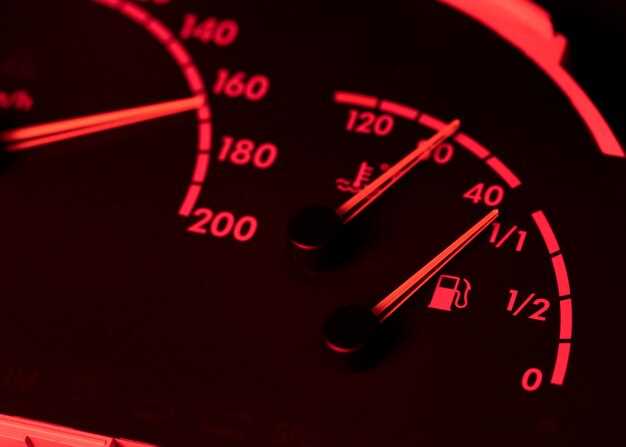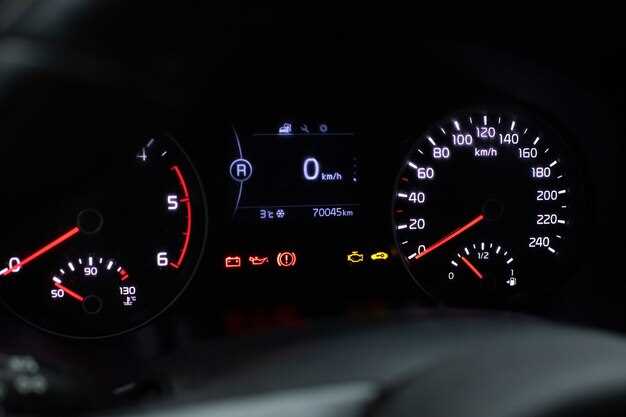The Basics of Dyno Tuning for Maximum Horsepower


Dyno tuning is an essential process for car enthusiasts and professional racers alike, aiming to unlock the maximum potential of an engine. By utilizing a dynamometer, tuners can evaluate the performance of a vehicle’s engine under controlled conditions. This evaluation not only provides insights into horsepower and torque but also reveals critical aspects of fuel efficiency and engine response.
During the dyno tuning process, various parameters such as air-fuel ratios, ignition timing, and intake manifold pressure are meticulously adjusted. These adjustments help to optimize the engine’s performance characteristics, ensuring that it operates within its ideal parameters. By achieving a harmonious balance between power and reliability, dyno tuning plays a pivotal role in enhancing the overall driving experience.
Furthermore, understanding the intricacies of dyno tuning can empower vehicle owners to make informed modifications to their engines. Whether integrating aftermarket parts or adjusting existing components, insights gained from dyno testing can lead to informed decisions that maximize performance. With the right approach to tuning, drivers can experience significant gains in horsepower while maintaining the longevity and durability of their engines.
What is Dyno Tuning and How Does it Work?
Dyno tuning is a process that optimizes a vehicle’s performance by fine-tuning its engine parameters using a dynamometer, commonly known as a dyno. This precision tool measures the power output and torque of the engine while it operates under various conditions. It provides critical data that helps tuners make informed adjustments to achieve optimal horsepower and efficiency.
The procedure begins by securing the vehicle onto the dyno, where it undergoes a series of tests. During these tests, the engine runs at various RPMs, allowing the dyno to capture real-time performance metrics. The data collected includes horsepower, torque, air-fuel ratios, and other vital statistics. This information is crucial for understanding how the engine performs under load and identifying areas for improvement.
Once the baseline performance data is recorded, tuners can modify several parameters, including fuel maps, ignition timing, and boost levels for forced induction engines. By making incremental adjustments and re-testing the vehicle, tuners can achieve a fine balance between performance, reliability, and drivability. This iterative process ensures that the vehicle runs at its best, tailored specifically to the owner’s preferences and intended use.
Dyno tuning serves not only to maximize horsepower but also to improve fuel efficiency and ensure the engine runs smoothly across a variety of driving conditions. It is an invaluable tool for performance enthusiasts seeking to unlock the full potential of their vehicles, and it plays a significant role in both street and race applications.
Key Tools and Equipment Used in Dyno Tuning Sessions
Dyno tuning is a critical process for optimizing vehicle performance, requiring specific tools and equipment to accurately measure and adjust engine parameters. One of the primary tools used in dyno tuning is the dynamometer itself, which measures the power output of an engine by applying resistance. There are two main types of dynamometers: engine dynamometers that test standalone engines, and chassis dynamometers that evaluate the entire vehicle performance.
An essential component of the tuning session is the Engine Control Unit (ECU) programmer or tuner. This device interfaces with the vehicle’s computer system, allowing the tuner to modify fuel maps, ignition timing, and other crucial settings for performance enhancement. Additionally, data logging devices are employed to capture real-time information such as RPM, temperature, and air-fuel ratios, which assist in making informed tuning decisions.
Wideband oxygen sensors are another critical tool, providing accurate readings of the air-fuel mixture in the exhaust. This data is vital for ensuring optimal combustion efficiency and preventing engine damage due to lean or rich mixtures. To ensure that the vehicle is performing at its best across a range of operating conditions, exhaust gas analyzers are also utilized to measure emissions and detect any potential issues with the tuning.
In order to facilitate seamless adjustments during the tuning process, a laptop or a tablet with compatible tuning software is often used. This software allows tuners to visualize data, modify parameters, and apply changes directly to the ECU, making the tuning process more efficient.
Lastly, a reliable cooling system is crucial in dyno tuning sessions, as it prevents the engine from overheating during extensive testing. This may include water-methanol injection systems or a dedicated cooling setup to maintain optimal operating temperatures throughout the tuning process.
Identifying Your Vehicle’s Specific Tuning Needs
Understanding your vehicle’s specific tuning needs is crucial for achieving optimal horsepower and performance. The first step in this process is to gather detailed information about your engine type, modifications, and overall goals. Different vehicles have unique characteristics, and recognizing these will help tailor the tuning approach effectively.
Begin by examining your engine specifications. Consider the type of engine, such as naturally aspirated, turbocharged, or supercharged, as each requires different tuning techniques. Additionally, assess any aftermarket modifications like exhaust systems, intake upgrades, or fuel management systems. These modifications significantly influence the tuning process, and knowing their specifications will help in making informed adjustments.
Next, determine your performance goals. Are you aiming for higher horsepower for racing purposes, improved torque for better drivability, or enhanced fuel efficiency? Each goal dictates a specific tuning strategy. For example, performance tuning may focus on maximizing power output, while economy tuning emphasizes a balance between performance and fuel consumption. Clearly defining your objectives will guide the tuning process and ensure a targeted approach.
Data collection is another vital component of identifying tuning needs. Utilize diagnostic tools, such as an OBD-II scanner, to monitor real-time engine performance data. Parameters like air-fuel ratio, ignition timing, and boost pressure can provide crucial insights. Logging this data allows for informed adjustments and helps identify areas needing improvement.
Lastly, consider the driving environment and conditions. Whether the vehicle is primarily used for daily commuting, off-road adventures, or track days will influence tuning requirements. Tailoring the tune to match typical driving conditions ensures that the vehicle performs optimally in its intended context.
By thoroughly understanding your vehicle’s specifications, modifications, performance goals, engine data, and driving conditions, you can effectively identify its specific tuning needs. This knowledge is essential for a successful dyno tuning session, resulting in enhanced performance and maximum horsepower.
Common Misconceptions About Dyno Tuning
One prevalent misconception about dyno tuning is that it guarantees a significant horsepower increase. While dyno tuning can optimize engine performance, the extent of horsepower gains varies based on the vehicle’s existing setup, modifications, and overall condition. It is not a magic solution for every car and often yields modest improvements rather than drastic changes.
Another misunderstanding is that dyno tuning is only for high-performance or modified vehicles. In reality, even stock vehicles can benefit from a professional dyno tune. The tuning process can enhance fuel efficiency, throttle response, and overall drivability, making it advantageous for regular cars as well.
Many people believe that once a vehicle is dyno tuned, it never needs tuning again. However, various factors such as changes in driving style, fuel quality, or new modifications can affect engine performance over time. Regular tuning might be necessary to maintain optimal performance, especially if any changes are made to the vehicle.
Some assume that dyno tuning solely focuses on maximizing horsepower. While power output is important, a comprehensive tuning process also addresses other parameters such as air-fuel ratios, ignition timing, and boost levels, all of which contribute to the vehicle’s overall performance and reliability.
Finally, a common misconception is that all dyno tuning is the same, regardless of equipment or methodology used. Different types of dynamometers (such as engine or chassis dynos) and varying tuning techniques can lead to significantly different results. It is essential to choose a reputable tuning facility that utilizes the appropriate tools and has experience with your specific vehicle type.
How to Choose a Professional Tuner for Your Project

Selecting the right professional tuner is crucial for achieving optimal horsepower and performance in your project. Here are key considerations to help you make an informed choice:
- Experience and Credentials:
- Look for tuners with extensive experience in the specific type of vehicle or engine you are working on.
- Check for relevant certifications, such as ASE, EFI University, or manufacturer-specific training.
- Reputation and Reviews:
- Research online reviews on platforms like Google, Yelp, or automotive forums.
- Ask for testimonials from previous clients to gauge satisfaction levels.
- Specialization:
- Identify tuners who specialize in your type of vehicle, be it domestic, import, or exotic cars.
- Inquire if they are familiar with any specific aftermarket parts you plan to use.
- Shop Facility:
- Visit the tuning facility to assess cleanliness, organization, and the presence of modern equipment.
- Ensure that the tuner has proper diagnostic tools for effective tuning.
- Communication and Collaboration:
- Evaluate how well the tuner communicates. They should listen to your goals and concerns.
- Choose someone willing to collaborate and provide feedback throughout the tuning process.
- Pricing Structure:
- Understand the tuner’s pricing model. Some may offer flat fees, while others might charge hourly.
- Get a detailed estimate to avoid unexpected costs and ensure it aligns with your budget.
- Follow-Up Support:
- Inquire about post-tuning support, including revisions and adjustments after initial tuning.
- Ensure they are available for troubleshooting in case any issues arise after the tuning process.
By carefully considering these factors, you will be better equipped to choose a professional tuner who can enhance your vehicle’s performance and deliver the horsepower you desire.
Monitoring Performance Gains After Tuning
After completing a dyno tuning session, it is crucial to monitor the performance gains to ensure that the modifications have produced the desired results. This can be done through various methods, including dynamometer testing, on-road testing, and data logging. Each approach provides valuable insights into engine performance and overall vehicle dynamics.
The dynamometer remains the most straightforward method for quantifying performance gains. By comparing baseline runs with post-tuning runs, you can accurately measure horsepower and torque improvements. It’s essential to conduct multiple runs to establish a consistent and reliable data set.
On-road testing complements the dyno results by providing insights into real-world performance. This involves assessing vehicle responsiveness, throttle response, and acceleration metrics during daily driving conditions. Keep track of lap times or quarter-mile runs to quantify improvements compared to pre-tuning performance.
| Measurement Method | Details | Benefits |
|---|---|---|
| Dynamometer Testing | Quantifies horsepower and torque before and after tuning. | Provides precise and controlled conditions for accurate results. |
| On-road Testing | Evaluates real-world vehicle performance during normal driving. | Assesses responsiveness and drivability improvements. |
| Data Logging | Uses sensors to capture engine data over time. | Allows for detailed analysis of engine parameters under various conditions. |
Data logging is another critical aspect of monitoring performance gains. Utilizing OBD-II scanners or aftermarket data loggers, you can track various engine parameters such as air-fuel ratio, boost levels, and knock retard. Analyzing this data helps to identify any potential issues or areas for further refinement.
In summary, effective monitoring of performance gains after tuning involves a combination of dynamometer testing, on-road assessments, and data logging. Each method offers unique insights that can guide further adjustments and enhancements, ensuring that you maximize the benefits of your tuning efforts.
